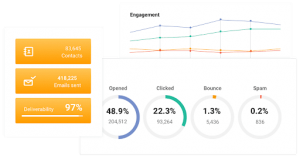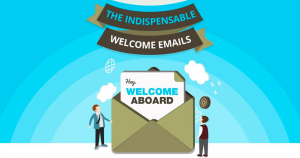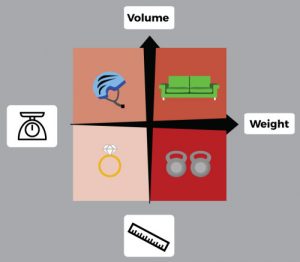— March 1, 2018
For an agency, there are few bigger challenges than attracting and retaining top employees. When you’re in the business of selling creativity, the quality of your people dictates the quality of your work.
How can you keep employees at your agency happy? Are there any proven tactics you can adopt to improve job satisfaction? We’ll share 5 scientifically backed approaches to employee happiness in this article.
Key Takeaways
If you’re in a hurry, here are the key takeaways from this article:
- Happier employees perform better, have lower turnover rates, and are more satisfied with their work.
- Workplace culture is inherently tied to workplace happiness. Employees often value the strength of a company’s culture as more important than compensation and material benefits.
- The more “meaningful” their work, the happier your employees will be.
- Employees who have a sense of ownership in their work, and get the freedom to choose how, where, and when they work report higher levels of happiness.

The Case for Employee Happiness
No modern manager worth his MBA will admit to ignoring employee happiness. The notion that happier employees are better employees has been a mainstay of management wisdom since the time sociologists fiddled with the lighting at Hawthorne in the 1920s.
But beyond conventional wisdom, there are some real reasons to focus on employee happiness, especially in the agency business.
To start with, employee turnover rate in creative agencies is the highest among all industries save the hospitality industry. In the UK alone, this turnover rate costs agencies £184M annually. Turnover rates are also increasing faster at agencies than comparable industries.
Where do these departing employees go? Increasingly, to tech companies, which pay significantly more. For instance, average first-year salaries in agencies are $ 45,000 less than the tech industry. With more and more management consultancies jumping into the fray, the competition for talent is only going to increase.
As an agency, you might not be able to compete with Google and Amazon on salaries. You can, however, compete on culture and workplace happiness. In fact, research even indicates that employees often prefer these above a fatter paycheck.
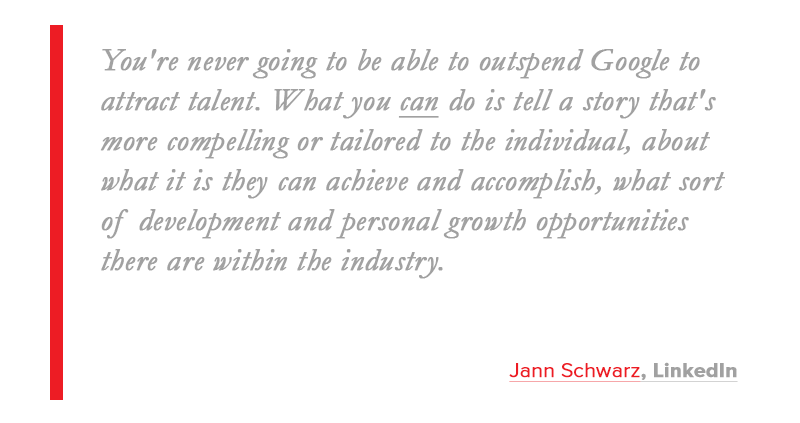
Then there is the question of productivity. Research shows that positive, happier teams are also more productive. As this paper notes:
“Evidence is found that positive practices do, in fact, predict organizational performance. More important, improvement in positive practices predicts improvements in indicators of effectiveness over time.”
A practical benefit of a happier workplace is lower stress and better employee health. This, in turn, can save you in terms of better productivity, lower absenteeism, and reduced healthcare expenditure – something that costs US businesses $ 500B annually.
Perhaps most importantly, no one wants to work with an agency that’s unhappy – neither prospective employees, nor prospective clients.
So how can you make employees at your agency happier?
I’ll share some insights and research studies below.

How to Keep Employees Happy
Employees leave agencies for a variety of reasons. Some do it because of better pay. Others leave because they want more challenging work.
Besides the rather simple solution – “pay them more” – there are a number of steps you can take to keep employees happy at your agency:
1. Focus on Culture and Leadership
We’ve discussed building an inclusive culture in an earlier post, but what does it really do for employee retention and happiness?
Plenty.
A survey by Glassdoor shows that employees value culture and values far more than compensation when it comes to job satisfaction.
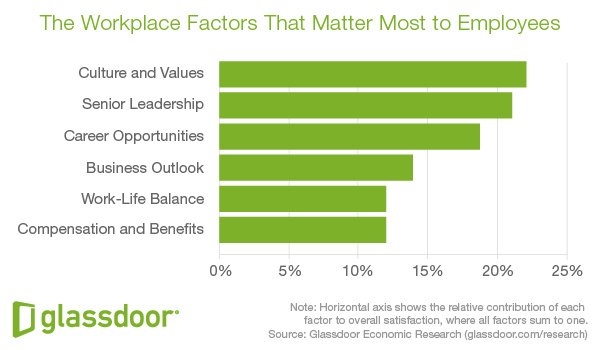
The importance of culture also increases as employees climb up the corporate ladder. For high-earning employees (those making over 80k), culture and the quality of leadership assume an outsized role in workplace satisfaction.
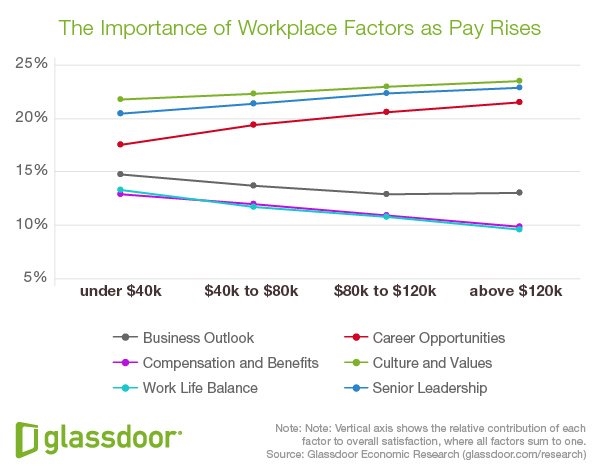
The survey goes on to conclude that higher pay might help you attract employees, but to keep them from leaving, you’ll have to make long-term investments in your culture and senior leadership.
How you create this “culture-focused” workplace will depend on your business (and we’ll discuss additional strategies below), but here are a few things that can help:
- Align your culture and strategy: Strategy is often top-down while culture is bottoms-up. Often, senior leaders develop a strategy that doesn’t gel with the culture on the ground. If your strategy is to, say, focus on collaborative work, but you don’t have a culture of collaboration, your employees – and work quality – will suffer.
- Value the strengths of your culture: Every organization, no matter how young or small, has a culture. This culture will have some strengths of its own. Focus on evaluating these strengths and emphasizing them in any cultural transformation.
- Adopt a bottom-up approach: Culture should never be a managerial endeavor. Instead, it should be based on feedback from your employees. Ask your people what matters to them and what they would like to change in the company. Align these with senior executives’ vision to create a truly cohesive agency culture.
- Measure culture evolution: It helps to have a hard measure of how your agency’s culture is evolving. Monitor indicators such as business performance, the health of key relationships with clients and vendors, and the subjective assessment of how employees feel about the company.
- Make learning a part of your culture: Lack of career advancement is one of the biggest reasons for employee turnover at agencies. Counter this by giving employees a chance to further their careers by learning new skills. Make it a part of your culture by offering access to courses and developing mentorship programs.
You can also invest in diversity and team building along with the approaches outlined below to develop a more cohesive culture.
2. Give Your People Meaningful, Challenging Work
Great people who know their worth don’t want to do just any job. They want to do work which actually has an impact on the world and is sufficiently challenging.
In fact, a survey by LinkedIn and 4A found that 50% of departing employees at agencies left because their work wasn’t challenging enough.
A wide-ranging study spanning 20,000 workers across continents came to the same conclusion: “Why we work determines how well we work.”
For instance, in the airline industry, companies that create opportunities for more meaningful work have more motivated employees and routinely outperform their competitors.
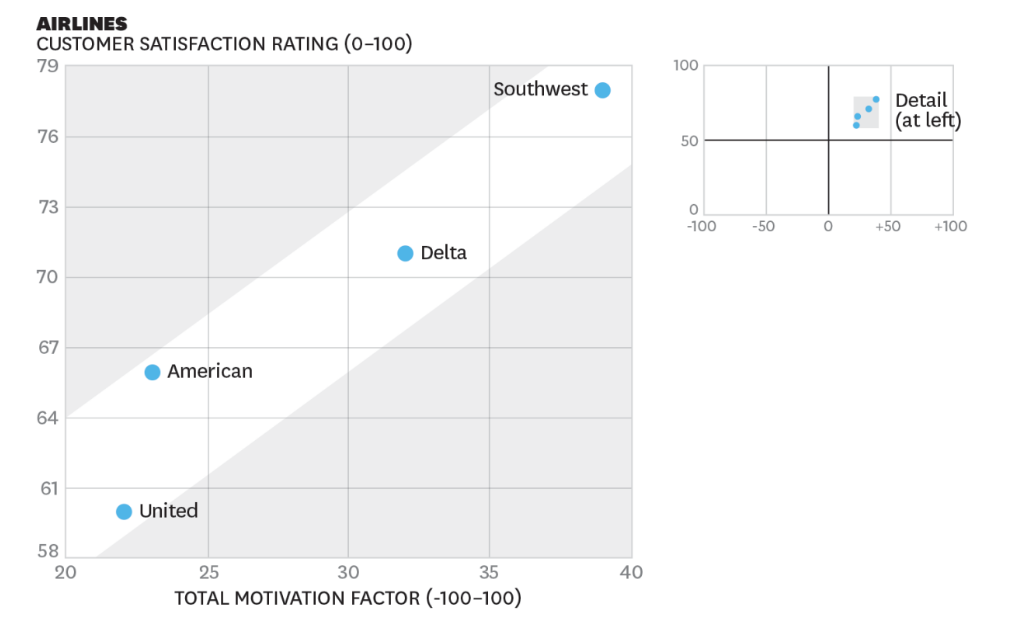
The bigger question, of course, is how you can create more “meaningful” work?
Researchers have found that work is meaningful when it is motivated by three factors:
- Play, i.e. when the work itself is so enjoyable that you like to do it. Curiosity, experimentation, and freedom to innovate are tied to ‘play’.
- Purpose, i.e. when the work is aligned with your personal identity. For instance, if you believe in doing social good, work that involves the same goal will have a stronger purpose to you.
- Potential, i.e. when the work has the potential to benefit your identity. For instance, if you’re aiming to be a senior marketer at an agency, any work that focuses on more advanced marketing tactics will appeal to you because of its potential.
In contrast, if your employees are motivated by financial pressure (“I must do it because I need the money”) or emotional pressure (“I must do it because my boss asked me to”), they are likely to find the work non-meaningful.
How to make work more meaningful
As an agency, your goal should be to emphasize the play, purpose and potential of your work. Here are some ways to achieve this goal:
- Give employees access to free time and resources to pursue new ideas. Think of Google’s “20% time” rule or W.L. Gore & Associates (makers of Gore-Tex fabric) giving employees access to company’s facilities for experimenting with new products.
- Let employees design their own processes. Employee-led processes can often be more attuned to their needs than manager-led approaches.
- Share the results of the work with employees. Show them what immediate and long-term impact their efforts yielded.
- Motivate employees by emphasizing the ‘why’ of your work. Make this ‘why’ more meaningful than simply “because the client needs it”.
- Make team roles more fluid. Give people within each team the room to “play” with different tools and approaches.
Essentially, your goal should be to create a workplace that rewards innovation and emphasizes the ‘purpose’ of your work. Encourage curiosity, create challenging opportunities, and inculcate a sense of trust in your team to improve overall workplace satisfaction.
3. Pay for Performance, Not Profit
As a manager, you already know that how much you pay employees has a direct impact on their job satisfaction.
How you pay them also has an impact on their happiness.
According to a study of 13,657 employees, when pay is linked to performance, overall job satisfaction and trust in management increases. Another study found
However, when pay is linked to company profits, there is no equivalent improvement in job satisfaction. In some cases, it even deteriorated trust in senior management.
A common practice in smaller companies is to give employees a sense of ownership by giving them company shares. But the above study found that share ownership had a direct negative relationship with job satisfaction.
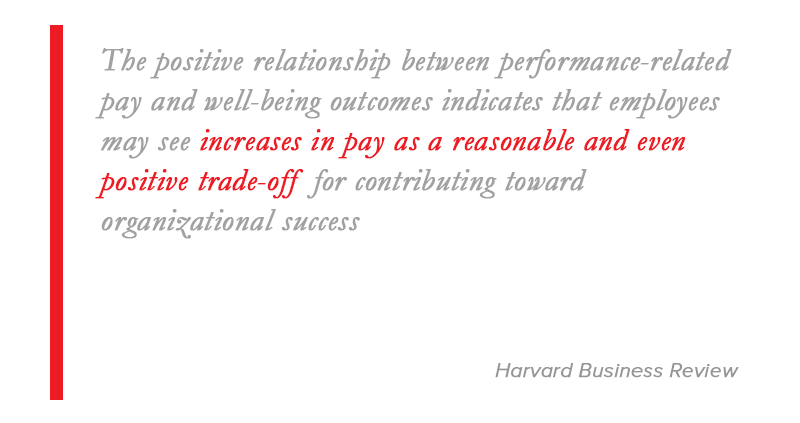
Another study found that performance-linked pay schemes are particularly impactful for employees who are risk-oriented or have direct control over their own performance.
You might not want to try it out for all your employees, but in certain departments such as sales or marketing, you should definitely explore performance-linked pay schemes.
4. Adopt Work Flexibility
What’s the easiest and cheapest way to improve workplace satisfaction?
Simple: let your employees work from home.
We’ve written about hiring remote workers earlier. There is a ton of evidence indicating that people who work remotely are happier than those who work in offices.
In a survey by TINYPulse, employees were asked “How happy are you at work?”. Remote employees scored themselves 8.10 on a 10-point scale. Office employees scored a 7.42 on the same question.
Of course, there is a downside – remote workers don’t have as strong relationships with their colleagues. Overall job satisfaction, however, is enough of a reason to explore this possibility.
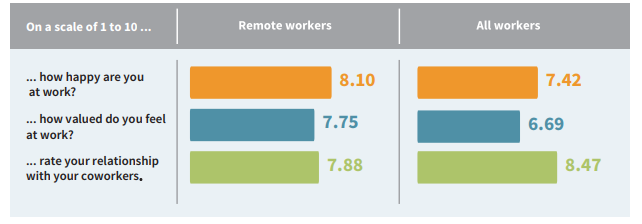
These findings are backed by multiple other studies. One experiment at a leading Chinese travel site, Ctrip, showed that working from home improved performance by 13% and helped the company save $ 1,900/employee. Another study concluded that working from home reduces stress levels.
But remote work isn’t for everyone. As the Ctrip experiment concluded, workers who thrived in remote work usually had stable social lives at home, i.e. they were married and/or had children.
More significantly, remote work should be seen as a choice, not a compulsion. In TINYPulse’s survey, workers who were working remotely because their job required it were less happy than those who chose to work remotely.
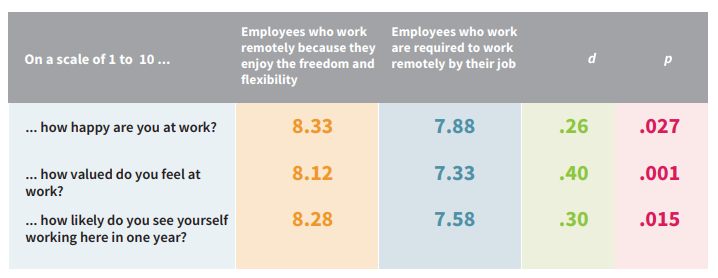
Which is to say, instead of asking everyone to work remotely, make it optional. Given employees the freedom to come into work if they want to. Else, give them the flexibility to work from home.
5. Give Employees a Sense of Ownership to Spur Engagement
Consider these two contrasting reports:
- An annual Babson College report on global entrepreneurship routinely finds that entrepreneurs are among the happiest people on earth, especially in terms of work satisfaction and engagement.
- Less than a third (31.5%) of U.S. workers say that are “engaged” with their work. A majority are either not engaged (51%) or actively disengaged (17.5%), according to a Gallup survey.
From these reports, the one thing you can say for certain is that people who have a sense of ownership in their work – such as entrepreneurs – are decidedly happier and more engaged.
This is borne true by a number of studies as well. One paper published in the Journal of Organizational Behavior concluded that employees’ sense of psychological ownership is positively linked to both their job satisfaction and job performance.
Which is to say: if you can give your employees a sense of ownership, you’ll have happier employees.
There are two approaches to giving employees a sense of ownership: physical ownership of personal space, and intellectual ownership of ideas and initiatives.
Physical ownership
Research shows that employees perform better when they can control their physical space. How, where, and when they work is tied positively to job performance and satisfaction.

Job satisfaction is also tied to how employees feel about their working space. In one study, employees who were asked to treat their cubicles as if they “owned” it reported feeling more satisfied than those who “rented” it.
You can put this into practice by encouraging employees to own their working space by putting up posters, pictures, and other personal identifiers. If your budget can accommodate it, consider giving them their choice of office equipment as well.
Idea ownership
The other facet of ownership is intellectual, i.e. how much of a stake employees have in the organization. Employees who can claim to own an idea, initiative, or project at the company show a greater sense of job satisfaction and initiative than others, as per research.
In practical terms, this means giving employees the freedom to pursue their ideas and passion projects – at least within reasonable terms. Lots of agencies claim that they’re open to feedback and ideas from employees, but if you can actually put these suggestions into practice, you’ll give your people a big sense of “belonging” to the company.
Over to You
Keeping employees happy isn’t something you can effect overnight. Instead, it should be a long-term, organization-wide goal. It requires significant involvement of both employees and their managers.
The results, in terms of lower turnover rates, better performance, and more satisfied employees, however, is worth it.
What are some employee happiness initiatives at your agency? Let us know in the comments below!
Business & Finance Articles on Business 2 Community
(150)
Report Post


